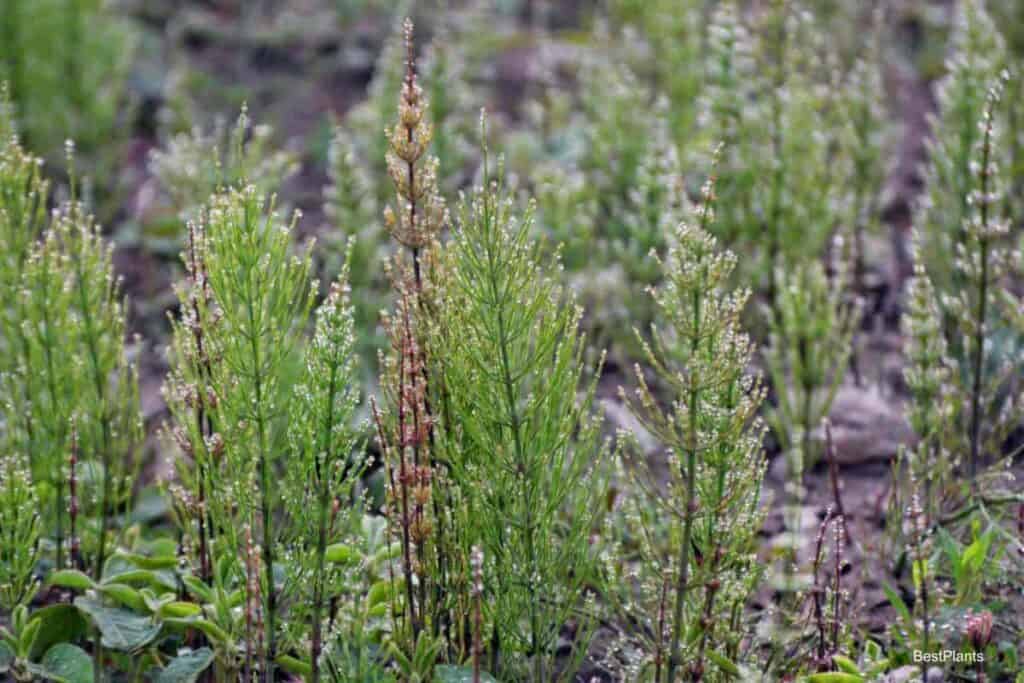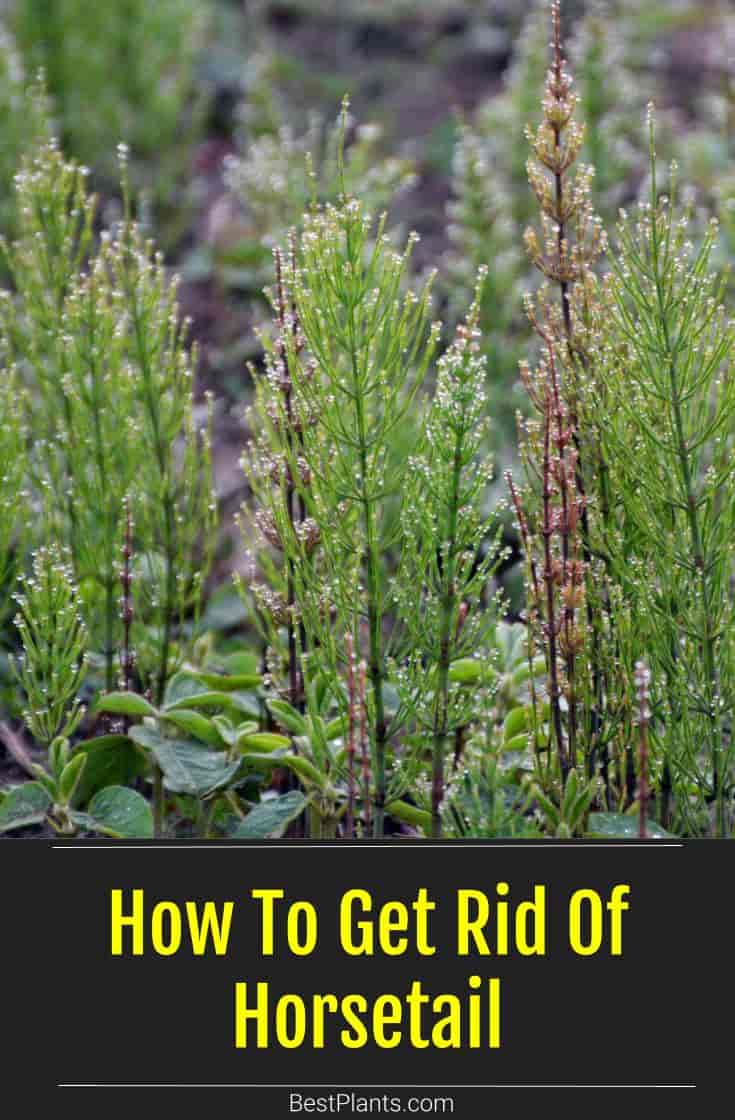Horsetail (Equisetum spp.) is a rugged weed that resists such tried and true herbicides as Roundup. It is no wonder you want to know “How to kill horsetail weeds.”
The invasive horsetail weed survives under adverse conditions. Its deep roots allow the horsetail to bide its time with little light and air.

Luckily, horsetail is somewhat sensitive to herbicides that kill nutgrass and sedge, such as 2,4-D. Even so, permanent horsetail control is a long-term commitment.
This article shares tips to help you rid your yard and garden of horsetail. Read on to learn more.
What Is Horsetail?
This invasive perennial plant has been around in one form or another since the dawn of time.
It is a relative of ferns, and at one time, there were more than 30 different members in its family.
These days, there are just a couple of horsetail varieties.
Mare’s Tail
One is called Mare’s Tail, and it looks quite a bit like the tail of a horse.
This variety has multiple jointed, slim, green branches.
Like many plants that have fallen out of favor, Mare’s Tail was once valued for medicinal uses.
Specifically, it can help stop bleeding and encourage wound healing.
Scouring Rush
The other type of horsetail is called Scouring Rush, a leafless plant that grows in tall, green, jointed stems.
Like its cousin, it’s also once valued for medical uses. It had a practical use as a scouring implement for scrubbing cooking utensils and polishing wood.
Today, horsetail has fallen from favor due to the following characteristics:
- Enthusiastic growth habits
- Dogged persistence
- Toxicity to livestock
In addition, the plant spreads quickly, with wild abandon through spores blown about by the wind.
It can set down roots in the most adverse conditions.
Once established, stands of horsetail can spread to be 6′ feet across and 4′ feet high.
Once it takes a foothold, horsetail will take over empty fields, roadside ditches, ponds’ verges, and any other settings quite rapidly.
Then, it sets down deep roots and begins spreading underground through rhizomes.
3 Quick Fixes To Get Rid Of Horsetail
1. Be Vigilant!
If you catch it early enough, you may be able to dig up and remove horsetail weed and eradicate it.
However, if you go for this option, you must be sure to dig wide enough and deep enough to remove all of the roots and rhizomes.
2. Use Black Plastic.
In larger areas, you might be able to smother the plant with black plastic. To do this, you may do the following steps:
- Mow it down and cover it immediately.
- Then, make a wide border of plastic around the stand of horsetail to prevent the roots from running along and sprouting just past the edges.
- Weight the edges of the plastic down with boards, brick, rocks, and the like.
- Leave the plastic in place for an entire growing season.
With any luck, the horsetail will smother and die.
3. Use a 2,4-D Herbicide.
This is the only type of herbicide that is effective against this plant.
For best results, cut the plant down to a height of about 2″ inches and give it liberal spraying with an herbicide containing 2,4-D.
For more information, see our article “Does 2,4-D Kill Clover?”
Can You Kill Horsetail With Natural Products?
Products such as vinegar, bleach, and even boiling water will have little or no effect on horsetail because of its deep, traveling root system.
You may kill the vegetation and even the top layer of roots and rhizomes, but the deeper growth will escape and travel.
It is possible to kill horsetail by thoroughly salting the earth, but that is not a good idea.
Salt will ruin the earth for any growth.
Suppose you have horsetail growing in a gravel driveway or another location where you never want to grow anything.
In that case, salt might be an option, but remember that it will eventually wash away and affect surrounding areas.
5 Tips For Long Term Horsetail Management
Even though the 3 tips above are reasonably effective against horsetail in the short term, the best way to manage this hardy trouper is through diligent attention to the health and well-being of your yard and garden.
Follow these 5 tips:
1. Keep your yard and garden well-tended. Till the ground frequently in areas where this is appropriate to prevent horsetail from developing roots. Don’t till the soil around stands of horsetail because this will encourage spread.
2. Pay attention to drainage in your yard and take steps to improve it as needed to avoid having damp areas where horsetail can thrive.
3. Raise the pH level of your soil by applying dolomite lime to the soil surface surrounding garden plants. Note that you should wait to apply fertilizer until a couple of weeks after applying dolomite lime so that the two products will not cancel each other out.
4. Fertilize appropriately for the needs of your lawn and garden. Apply fish compost, aged manure, or home compost to lawns and other large areas. This makes an inhospitable environment for horsetail.
5. Grow thick ground covers to keep your lawn thick, lush, and well-tended to prevent having any open ground where horsetail can take hold.
